August Strindberg (1849-1912) Painter and Photographer
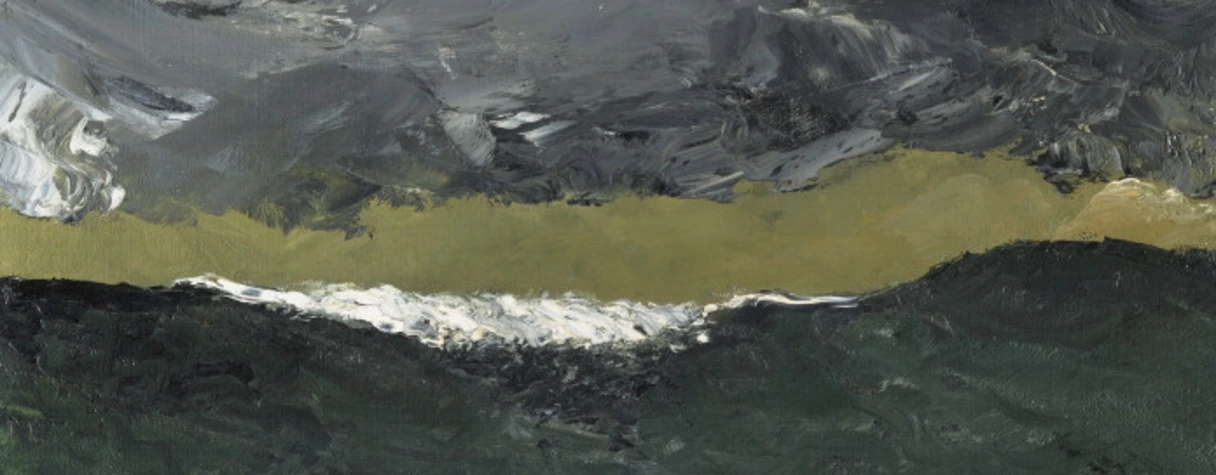
Vague VII, entre 1900 et 1901
Musée d'Orsay
© Musée d’Orsay, Dist. RMN-Grand Palais / Patrice Schmidt
See the notice of the artwork

Autoportrait avec la wunderkamera, 1906
Stockholm, musée Nordique
© musée Nordique
This exhibition is the first monographic retrospective devoted to August Strindberg in France. First presented at the National Museum in Stockholm and then in the Copehagen State Museum, it gathers about 130 paintings, photographs, drawings, manuscripts and sculptures by the artist, allowing visitors to discover a large part of the work of a truly singular creator of images. Alongside his literary output, he intermittently practised varied visual arts including painting and photography.

Image double, 1892
Collection particulière
© Alexis Daflos
The diversity of these practices reflects the breadth of the artist's concerns. It is difficult to find a field the Swedish writer was not interested in at some point in his life. Besides working on the renewal of novel writing and drama, he tried to give a new shape to natural sciences, to the way history and philology are written and finally to visual arts, about which he often wrote himself. In his literary work, he often gave prominent roles to artists, and this interest can be felt in the very writing itself. His contemporaries remarked on his unique ability to construct visual experiments with words and on the images he built with them. With this aim, painting was to him a means to give form to feelings he could not express through language, whereas photography reflected a manifest interest in attempting to grasp reality directly. These two practices worked for him as a means to reveal a reality words were unable to describe.
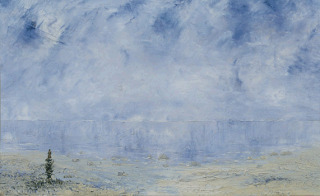
Salicaire, 1892
Collection particulière
© Alexis Daflos
Strindberg painted only over certain periods of his life: from 1872 to 1874, from 1892 to 1894 and for a few years after 1900. His photographic production also had three distinct stages: from 1886 to 1888, from 1890 to 1894 and from 1905 to 1907. It has often been said he resorted to painting when going through a crisis that prevented him from expressing himself by other means. The years following 1900 were more prolific as far as literature is concerned.
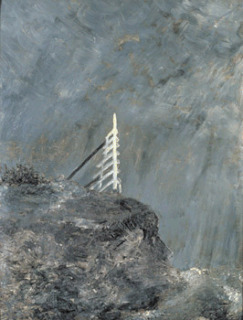
La Jument blanche II, 1892
Stockholm, musée National
© musée National, Asa Lunden
The exhibition shows only a few rare examples of Strindberg's first pictorial period, still shy and hesitant, whereas the periods of 1890 and the turn of the century are well represented. Strindberg's pictorial originality manifested itself for the first time during the summer 1892, which he spent alone in a cabin in Dalarö, in the Stockholm archipelago. He made a series of powerful and vigorous paintings that have few equivalents. The observation of the sea and the arid nature beyond the archipelago occupies a central place. Yet these pictures should not to be understood as natural, realistic images, but rather as personal and symbolic interpretations of what Strindberg lived through: in the atmosphere of the paintings, the situation evolves from sunny quietness to obscure chaos, as the sky and the sea seem to be about to dissolve one into the other.

Marine, 1894
Stockholm, musée National
© Bodil Karlsson, musée National
In the years ranging from 1892 to 1894, a period of intense pictorial activity spent between Berlin, Dornach and Paris, Strindberg also developed a theory of art related to his painting that prefigured both the surrealism and abstract expressionism of the twentieth century, of which his central text remains Of Chance in Artistic Production. When planning a picture, Strindberg gave way to chance. The canvas becomes a place of surprise and unexpected encounters such as in The Country of Marvels painted in 1894 in Dornach, where the forest landscape by the sea turns into a subterranean grotto.
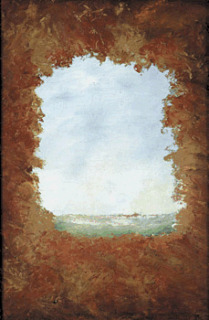
Le tableau d'automne jaune, 1901
Collection particulière
© Bernard Bleach Photography
When Strindberg resumed painting at the beginning of the twentieth century, he had just been through the worst crisis of his life, usually known as the Inferno crisis. After many years spent abroad, he finally settled in Stockholm.
He often returned to the motifs of the sea beyond the archipelago and he also worked on motifs inspired by his walks in the suburbs of Stockholm. The paintings are larger, his art gains in amplitude. At a time when Strindberg's main activity was writing for the theatre, several of his paintings resemble stage sets for his plays.
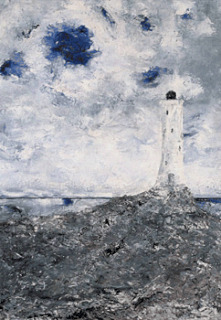
Le phare III, 1901
Uppsala, Bibliothèque universitaire
© Uppsala, Bibliothèque universitaire
Strindberg's activity as a photographer meets the same requirements as his pictorial activity: "I look for truth in the art of photography, intensely, as I look for it in many other fields", he wrote.
He first thought he had found this truth in a series of self-portraits and family photographs made in the small Swiss spa Gersau in 1886, a kind of echo to his biographical and autobiographical preoccupations. Strindberg appears on them in different roles: writer, father, gardener and revolutionary.

Autoportrait en compagnie des enfants, gersau, 1886
Stockholm, musée Nordique
© musée Nordique
From the early 1890s onwards, his practice of photography becomes more experimental; it borders on his research in the field of natural sciences and even his passion for the occult. Truth no longer dwells in the simple mechanical reproduction of an appearance but in a more intimate seizure of the "true". Among other experiments, Strindberg attempted to reproduce the stars in the sky by simply leaving the photographic plate under the starry sky, with neither camera nor lenses. A few years later, he developed a theory related to what he called the "psychological portrait", photographs that reveal the psychic attributes of the model, true "photographs of the soul". "I don't care for my appearance, but I want people to see my soul, and it appears in these photographs much better than in many others", he then wrote.
